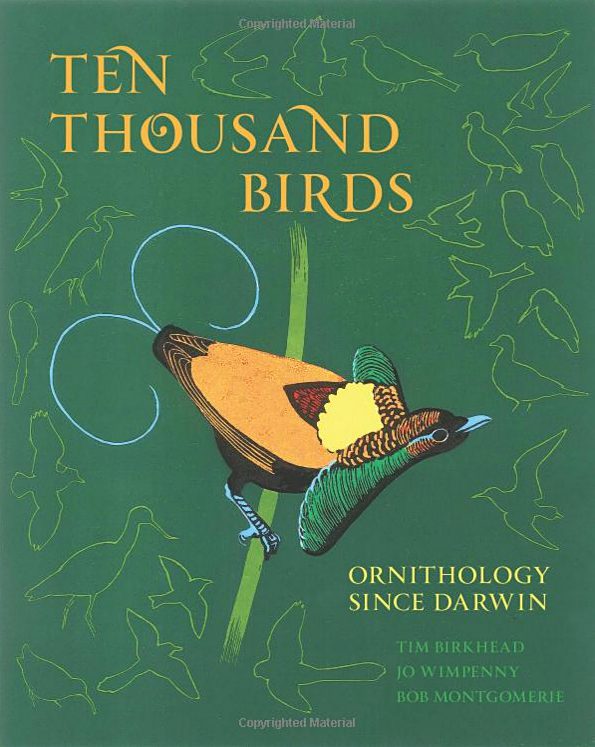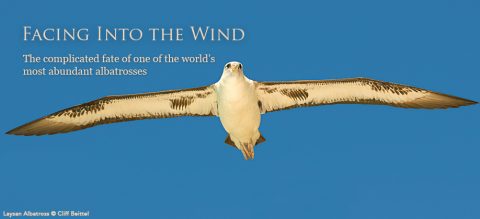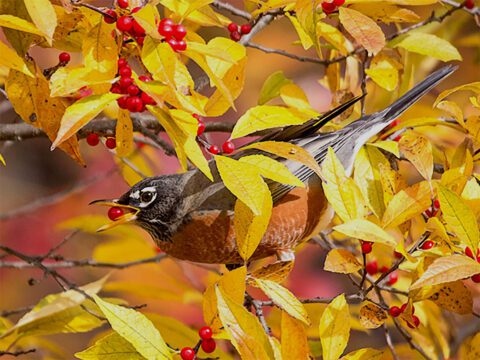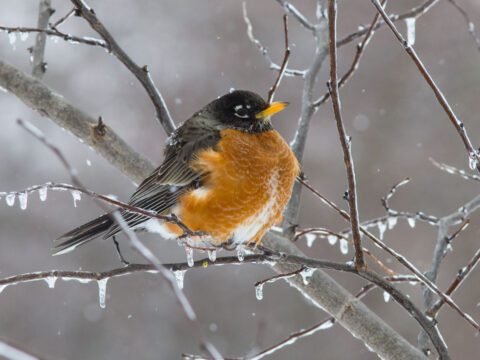Book Review: Ten Thousand Birds: Ornithology Since Darwin, by Tim Birkhead, Jo Wimpenny, and Bob Montgomerie
Review by Stephen J. Bodio
From the Summer 2014 issue of Living Bird magazine.
July 15, 2014
(Princeton University Press)
The title of this book refers to the approximate number of bird species in existence today, and it must be the most complete history of ornithology ever written. It is detailed, dauntingly comprehensive, and opinionated. It not only attempts to summarize modern ornithology—which is to say virtually all ornithology (a graph on the second page shows the number of ornithological papers rising from about 10 in 1865 to nearly 20,000 by the year 2000)—it tells the story of the ornithologists themselves, and interviews important living examples, who present their arguments or stories in their own words.
Although I am happy that the authors abandoned one plan—that of writing a chapter on each of the top 10 ornithologists of our time—their decision to arrange their chapters by topic means a summary of even the contents is impossible in less than a full-length article. I can only touch on high points; I advise anyone interested in more than just the appearance of birds to go out and buy the book immediately.
Do not skip the preface, where the authors tell us why they have organized the book as they have, about the importance in human history of understanding science, and—a wonderful phrase I have never seen before—that science consists of not “the truth” but “the truth for now.” From there we jump into a delightful first chapter, “Yesterday’s Birds,” which dumps us right into the controversy of birds-as-dinosaurs and its die-hard deniers. By now, with the Chinese fossils and endless analysis and argument, the fact that birds are “nested” cladistically (see Chapter 3) into Theropod dinosaurs should be obvious: birds are dinosaurs. (Now I like to tease that dinosaurs are birds.)
The next chapters, on origins, diversification, “Birds on the Tree of Life,” and a later one on form and function, are equally rich and taught me new things on every page, though I already know more than a bit about those subjects. I will be digesting less familiar material— “Behavior as Adaptation,” “Selection in Relation to Sex,” and others—for a long time yet, because much is new to me, but it is at least as exciting.
But this is not a mere ornithological textbook. It portrays its protagonists as quirky, eccentric, and sometimes even sinister individuals, and dishes more verifiable gossip on ornithology’s minor gods than any book I have ever read. You will encounter Baron Nopsca and his male lover costumed as Albanian peasants, and their murder-suicide pact when he became bankrupt, as well as geneticist C. G. Sibley’s conviction under the Lacey Act for possessing six illegal eggs (because one specimen was given the label Torpis oocleptica, “lazy egg thief,” one might think he was set up by a rival). Richard Meinertzhagen’s notorious hoaxing is presented, as is the more dubious charge that he murdered his wife. J. B. S. Haldane’s attack on Konrad Lorenz’s brief opportunistic membership in the Nazi party is noted, but so is Haldane’s lifelong Marxism and the fact that his wife had an affair with Lorenz. In 1931, Walter Rothschild, the victim of a blackmailer whose name never surfaced, sold 300,000 bird skins to the American Museum of Natural History for a mere $250,000, which was provided by one of the museum’s benefactors, Gertrude Vanderbilt Whitney. The “wars” of the systematicists are described factually, but the authors note that the “field seemed to attract some of the most arrogant, opinionated, and downright nasty individuals who ever called themselves scientists.” These tidbits do not just humanize the work of ornithologists; they remind us that science is a thoroughly human activity.
The scientific exposition and explanation is every bit as good as the biographies, but far more difficult to summarize. The authors’ accounts of evolution, sexual selection, behavioral ecology, and such concepts as cladistics, which is needlessly considered arcane, are as good as and more detailed than any I know of in recent scientific journalism. Ten Thousand Birds is as informative as an encyclopedia and 10 times more fun, and it will remain a standard for some time to come. It also features beautiful illustrations and a fascinating list of ornithologists, many with photos. My only complaint is that it is too heavy to read in bed.

All About Birds
is a free resource
Available for everyone,
funded by donors like you
American Kestrel by Blair Dudeck / Macaulay Library





